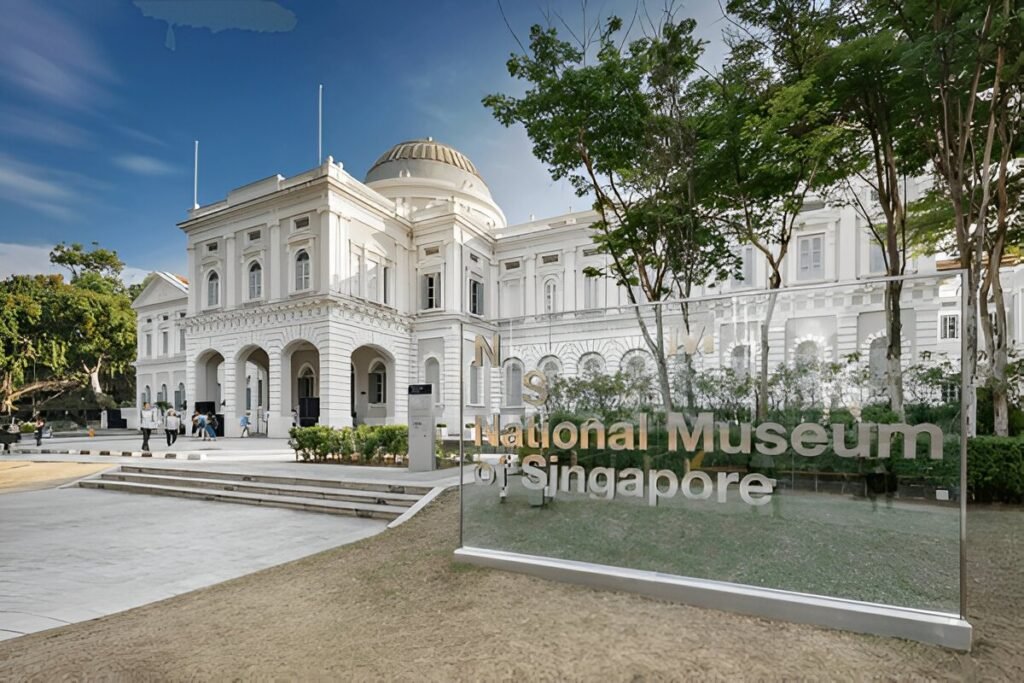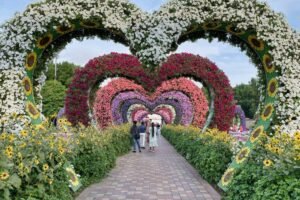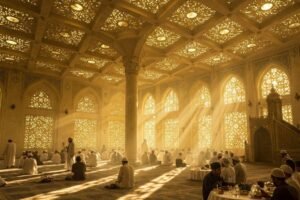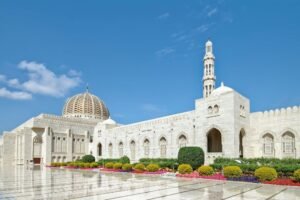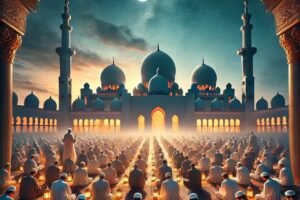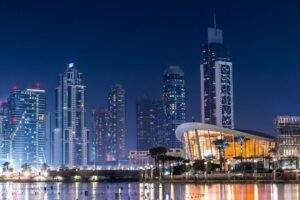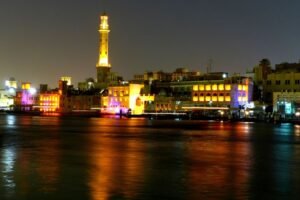Introduction
Singapore is a city that seamlessly blends modernity with history, where towering skyscrapers coexist with elegant colonial-era buildings that tell stories of the past. For history enthusiasts, architecture lovers, and curious travelers, exploring these remnants of the colonial period offers a glimpse into Singapore’s journey from a trading outpost to a global metropolis. This guide highlights some of the most significant colonial-era buildings in Singapore and their historical importance.
The Raffles Hotel

No discussion about colonial-era architecture in Singapore is complete without mentioning the Raffles Hotel. Established in 1887, this iconic landmark is named after Sir Stamford Raffles, the founder of modern Singapore. The Raffles Hotel is renowned for its grand white façade, colonial-style architecture, and its long history of hosting celebrities and dignitaries from around the world.
Visitors can walk through its halls, visit the Long Bar (the birthplace of the famous Singapore Sling cocktail), and admire the opulent design that has been preserved despite modernization efforts. The Raffles Hotel remains a symbol of Singapore’s colonial past and is an unmissable stop on any historical tour.
The Fullerton Building

Originally constructed in 1928 as the Fullerton Building, this majestic neoclassical structure was once home to Singapore’s General Post Office, among other government offices. Today, it has been transformed into the luxurious Fullerton Hotel, but its colonial charm remains intact.
With its imposing columns and grand architecture, the Fullerton Hotel offers a glimpse into Singapore’s past governance and commercial activities. Guests and visitors can take guided heritage tours to learn about the building’s transformation over the decades and its role in Singapore’s economic growth.
The Victoria Theatre and Concert Hall
Located in the Civic District, the Victoria Theatre and Concert Hall is one of Singapore’s oldest performing arts venues. Built in the 19th century, it was initially intended to serve as a town hall before being transformed into a cultural space.
The building showcases an elegant mix of Palladian and Renaissance architectural styles, with its clock tower serving as a prominent feature. After undergoing extensive restorations, the venue continues to host concerts, theatre performances, and events that celebrate Singapore’s rich artistic heritage.
The National Museum of Singapore
For those who want to dive deeper into Singapore’s colonial history, the National Museum of Singapore is an essential visit. Originally established in 1849 as the Raffles Library and Museum, this building is the nation’s oldest museum and showcases Singapore’s journey through its colonial past and beyond.
The museum’s neoclassical structure, with its stately pillars and domed roof, offers an architectural treat, while its exhibitions provide a detailed account of the country’s development. Visitors can explore artifacts, interactive exhibits, and multimedia presentations that shed light on Singapore’s transformation over the centuries.
The Old Supreme Court and City Hall
Now housing the National Gallery Singapore, the Old Supreme Court and City Hall buildings are among the most historically significant colonial-era structures in Singapore. Completed in 1939, the Old Supreme Court building was the last classical structure erected in the country during the British colonial period.
With its grand Corinthian columns and impressive dome, the building exudes grandeur and authority. It played a crucial role in Singapore’s legal history, including being the site where the Japanese surrendered to the British in 1945. Today, it is a cultural landmark showcasing Southeast Asian art and historical exhibits.
The Istana
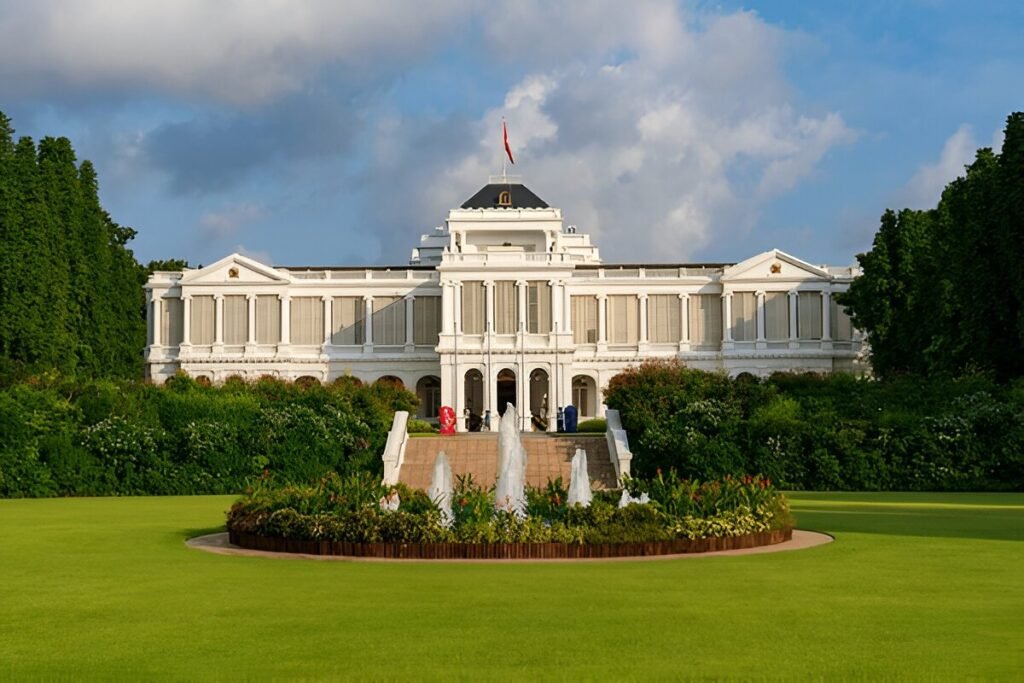
The Istana, meaning “palace” in Malay, is the official residence of the President of Singapore. Built in 1869 as the residence of the British Governor, it remains a significant symbol of governance and authority.
With its sprawling grounds and colonial-style architecture, the Istana is reminiscent of the British colonial era. While it is not open to the public year-round, visitors can explore its lush gardens and certain sections during special open house events held on major public holidays.
Chijmes
Chijmes (pronounced “chimes”) is another remarkable colonial-era landmark that has been repurposed for modern use. Originally built in the 19th century as a Catholic convent known as the Convent of the Holy Infant Jesus, the site now serves as a dining and entertainment complex.
The restored chapel, featuring stunning stained-glass windows and Gothic architecture, is a popular venue for weddings and events. Chijmes beautifully balances historical preservation with contemporary leisure activities, making it a unique blend of the past and present.
The Armenian Church
The Armenian Church of Saint Gregory the Illuminator is Singapore’s oldest Christian church, built in 1835. Designed by colonial architect George Drumgoole Coleman, the church features an elegant neoclassical design with whitewashed walls and simple yet graceful architectural elements.
Surrounded by a serene garden, the church is a quiet retreat from the bustling city and offers a look into Singapore’s religious and architectural history. It also serves as a tribute to the Armenian community that played a vital role in Singapore’s early commercial development.
Fort Canning Centre
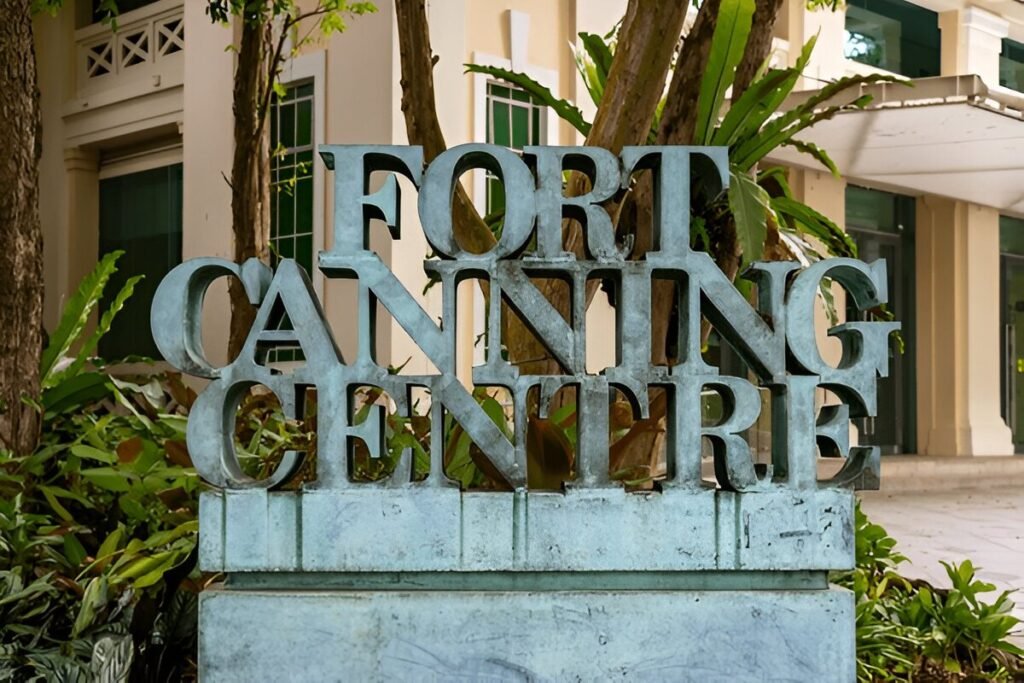
Located on the historically rich Fort Canning Hill, the Fort Canning Centre was once the British Army’s barracks and administrative headquarters. The hill itself has been a site of significance for centuries, even before British colonial rule.
Today, the restored colonial building serves as a cultural hub, often hosting exhibitions, performances, and heritage trails that educate visitors about Singapore’s military and colonial past. Fort Canning Hill is also home to several historical landmarks, including the Battle Box, an underground command center used during World War II.
Conclusion
Singapore’s colonial-era buildings offer a fascinating glimpse into the nation’s past, showcasing its architectural, political, and cultural history. These structures have been thoughtfully preserved and repurposed, allowing visitors to appreciate their historical significance while experiencing modern Singapore. Whether exploring grand hotels, historic government buildings, or charming churches, these colonial-era gems provide a deep appreciation for the city’s rich and diverse heritage.



